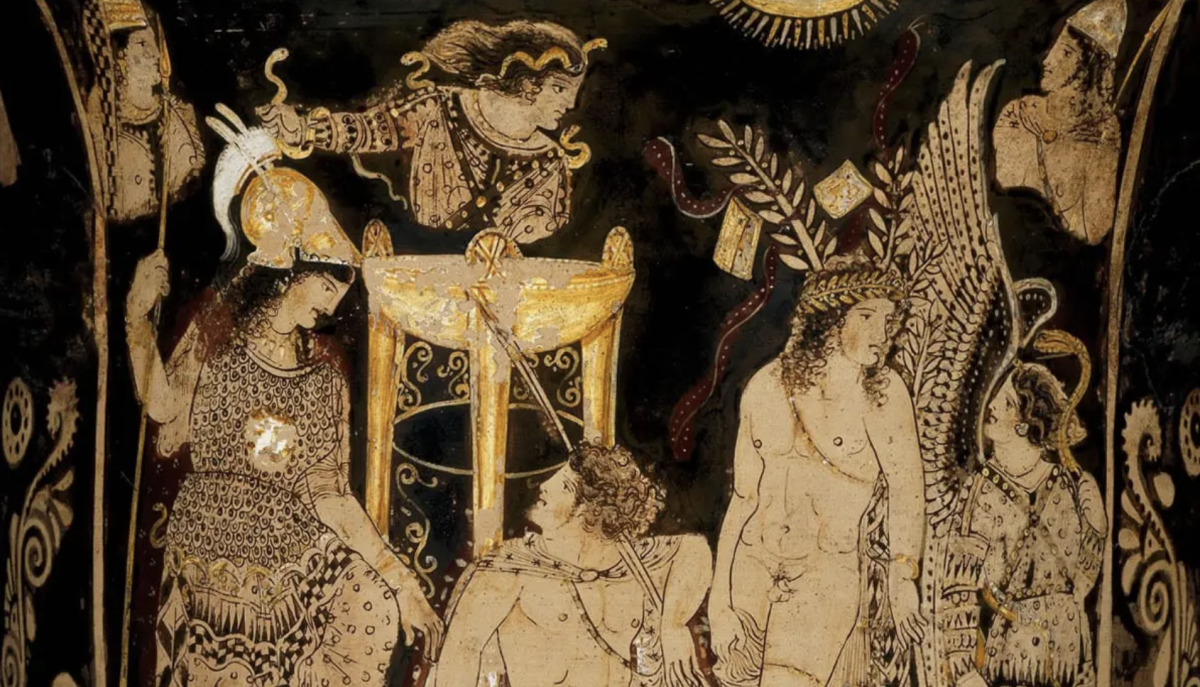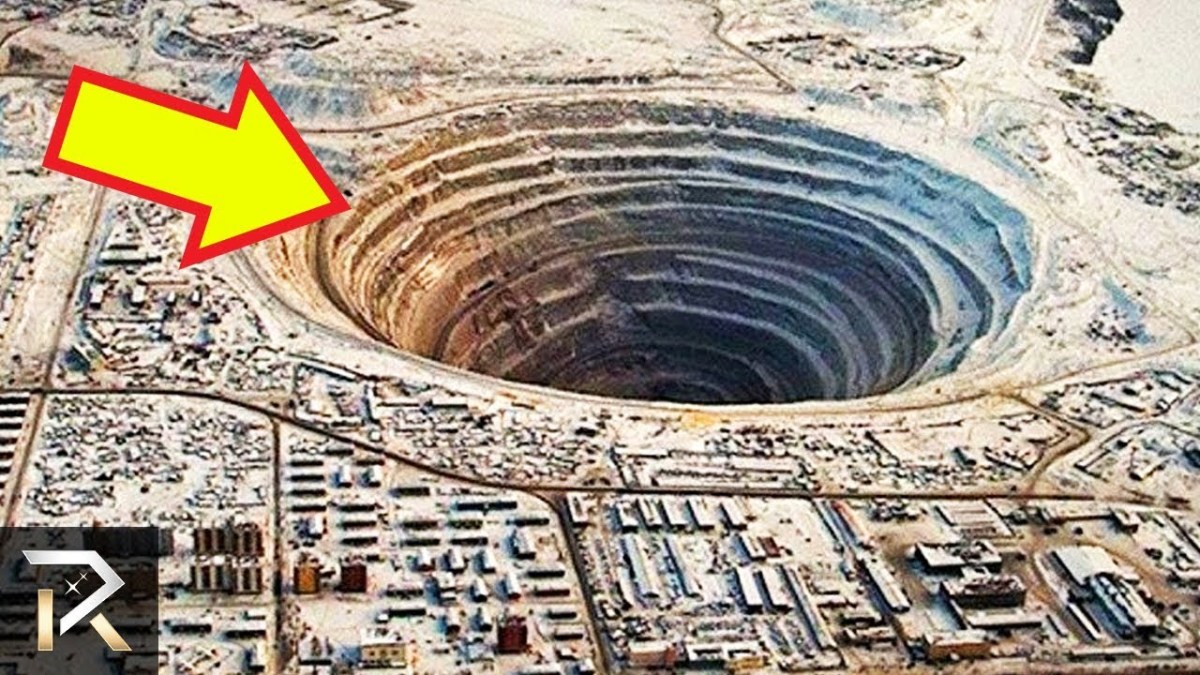The World's Mysterious Places
What is a place? It is not the same as space. Space is a mathematical set of coordinates on a three-dimensional set of axes which objects can occupy. If place were just the space, it wouldn't matter what the objects were. Imagine Stonehenge without the stones. It wouldn't be the same place at all, would it? On the other hand, there are lots of spaces with objects that don't seem to be places. Take any random spot in the woods, where you can find trees, moss, earth, insects, but it's still just space.
What makes Stonehenge a place and not that space in the woods? Is it because Stonehenge has been organized by human hands? That would mean the Grand Canyon is just a space, which is patently false. It seems, then, it is the way the space and the objects within it are perceived by us; and not merely perceived, but how we relate to it. The way believers relate to a sanctuary is as a sacred place and in doing so they shape it to present itself as sacred; and others who visit with generous minds perceive it as sacred themselves.
There are some places in the world that, for one reason or another, have inspired awe and feelings of mystery in those who have encountered them; our way of relating to them and their way of inspiring us has always been such that they are properly called Mysterious Places. Below I'll cover a few of those that have most presented themselves as mysterious places to me and offer the reader a brief glimpse into their wonder.
The Oracle at Delphi (Greece)
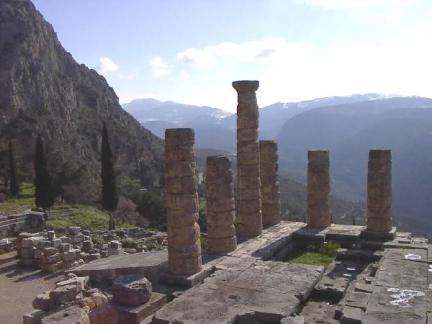
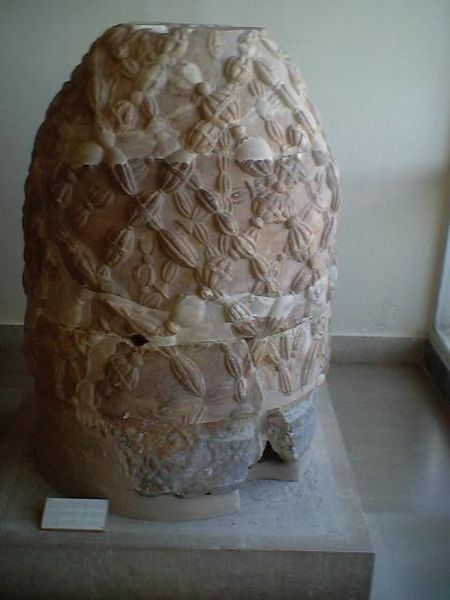
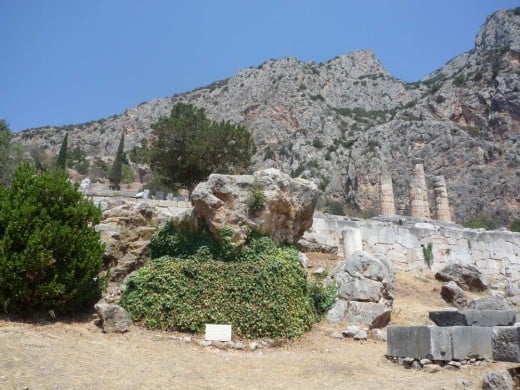
The Greek Oracles were temples, maintained by priests, that kept within a woman called a 'Sibyl.' The Sibyl was a sort of priestess who was thought to be inspired by the gods with prophetic powers and wisdom. There were several of these temples located throughout Greece and Rome. The most famous and important of which, however, was the Oracle at Delphi. The Sibyl of Delphi was known as the Pythia and she was under the direct inspiration of Apollo. (The Pythia is not to be confused with the Delphic Sibyl--a representation of whom can be found on the Sistene Chapel--who was yet another prophetess, unconnected prophetess that could be found at Delphi.)
The Temple of Delphi was thought to be built upon the very center of the world, the 'navel of the world.' It was once, according to legend, guarded by a giant snake known as the Python, which was slain by Apollo. This navel is, in fact, a volcanic fault from which volcanic gasses are spewed. Over this fault was placed a carved stone, known as the omphalos (Greek for 'navel'), with a hole allowing the gasses to escape. The Pythia sat on a tripod over the omphalos and inhaled the gas. This would place her in a trance-like state and she would answer whatever questions were put to her, usually in such a cryptic way that the priests had to decipher the utterances for the visitors. This advice was taken to be sacred, directly from Apollo.
The Oracle of Delphi appears in many great works of literature. Orestes, in Aeschylus Oresteia, seeks refuge from the Furies in Delphi, begging the aid of Apollo. A famous story is of Chaerephon asking whether any are wiser than Socrates; the Oracle responded that none is wiser than Socrates. In Shakespeare's The Winter's Tale, King Leontes sends ships to consult the Oracle over his wife's fidelity; he is made miserable when he goes against the advice of the Oracle.
While the site had been developed from 1600BCE, most if not all of the ruins at Delphi come from 700-200BCE, when the Oracle was thriving. Today one can find the ruins of the main temple, which had been rebuilt several times, the Sibyl rock, upon which the Sibyl was thought to sit when delivering her prophesies, and a distinctly non-fuming omphalos.
The Hypogeum of Hal-Saflieni (Malta)
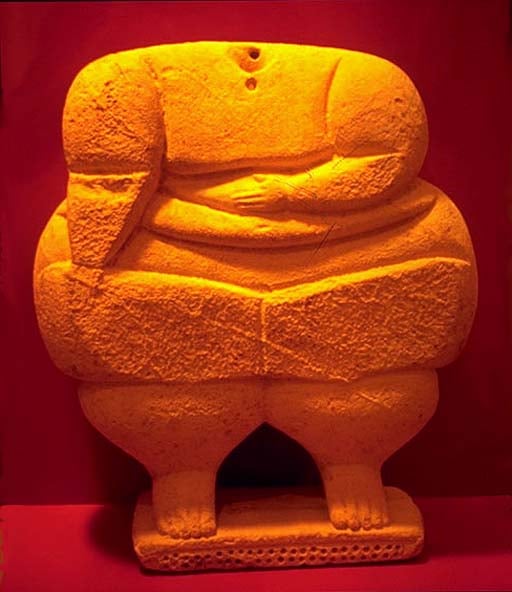
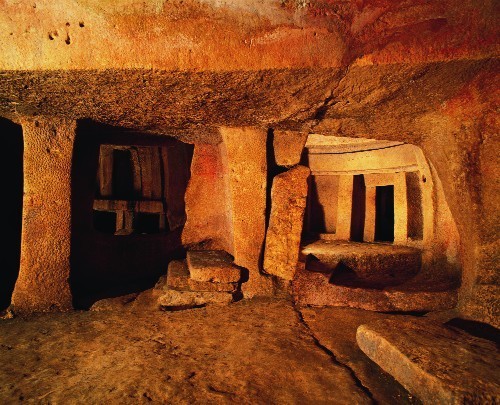
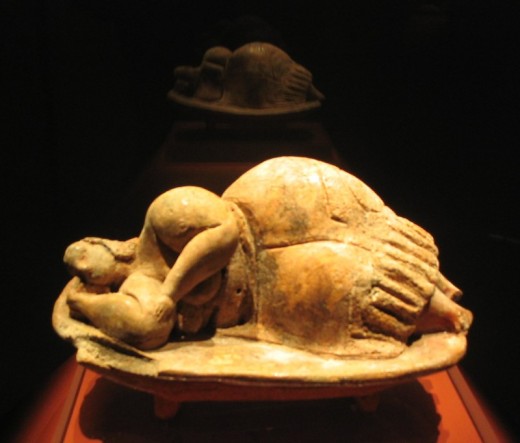
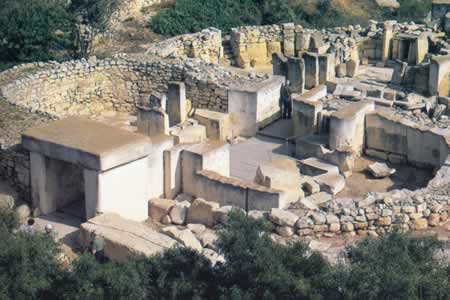
Hal-Saflieni is one of the oldest religious structures in the world and the only prehistoric underground temple in existence, dating back to 3000BCE. It consists of twenty underground chambers on three levels that are, for their time, architectural masterpieces, quite unrivaled. Within these chambers were found the bones belonging to thousands of different people. Curiously, when settlers arrived on Malta around 2000BCE, it seems they found it uninhabited, despite the signs of a once advanced civilization.
The chambers, which had been painted red in ochre, seemed to have had various uses consistent with pagan religions as practiced elsewhere. There is evidence that Hal-Saflieni was the home of an Oracle, much like the Pythia, who inhabited an echo chamber engineered for its acoustic effects. There are pits for votive offerings, suggesting that perhaps cures were sought from the gods or god. A statue of Sleeping Lady found in the pit has led some scholars to argue that people slept in the temple's carved niches to receive messages from the gods.
Like the other prehistoric temples of Malta, such as the above-ground sister-temple of Tarxien, it seems that Hal-Saflieni was dedicated to an earth mother. Large statues of obese women were discovered in many of Malta's temples, though none were found in the Hypogeum itself.
A fascinating account worth relating is of a woman who reported that after convincing a tour guide to let her squeeze into an off-limits burial chamber, she found herself over a chasm and on the other side saw hunched humanoids with white hair. Later several school children and a teacher who entered this chamber were caught in a cave-in and never rescued. The latter story is tragedic, the former is suspect. While interesting, such sensationalistic accounts distract from the true wonder of the Hypogeum: the attentive work dedicated to digging out the earth, carving and shaping the stones, ordering it all to service the gamut of their spiritual life. The cannot but resonate to the sensitive soul who nears it even to this day.
Ayers Rock or Uluru (Australia)
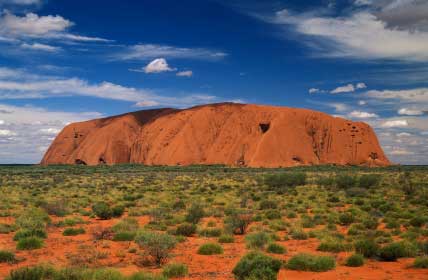
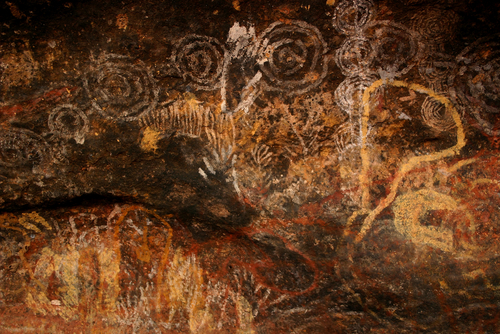
The Aborigines of Australia believe in a time before the formation of the world, when the Earth was formless substance. During this time, half-human and half-animal spiritual beings roamed and shaped the world into the features we have today. These spirits are spiritual ancestors of the Aborigines, who formed these markings as part of a record of their wanderings and activities; paths which the Aborigines still follow as part of their rituals. Ayers Rock, or Uluru as it is known to the Aborigines, is one of these sacred markings, formed by tribes of spirit ancestors and suffused with the memory of them.
There are Dreamtime myths relating to several of the natural markings on the rocks. A streak across the rock is where a lizard-man was slain; several holes are where a snake-man was transfixed with spears. The patterning of the caves within the rock are said by some tribes to represent the camps made by the spirit ancestors in the Dreamtime and when they perform their initiations, each tribe keeps to their area of the 'camp.' The whole rock is a sacred record of Dreamtime occurances. Drawings made by the Aborigines themselves detail some of these and other myths.
The Aborigines, then, naturally take unkindly to visitors climbing over Ayers Rock, taking pieces off it, and generally not respecting it for the place it is: these activities hurt the rock. Its shape is primally ordered, a sign of a higher reality; to manipulate or damage the rock is to change its signification, to obscure its essence.
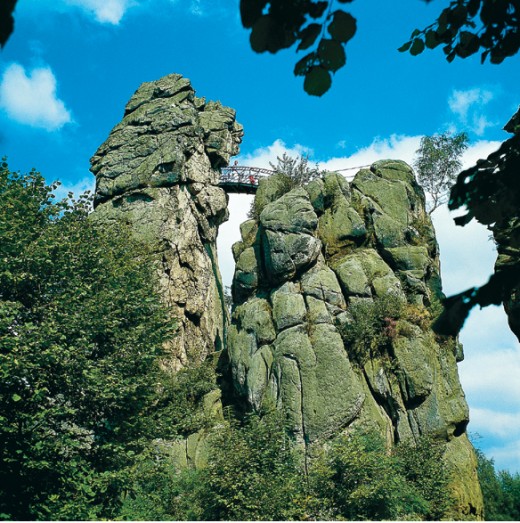
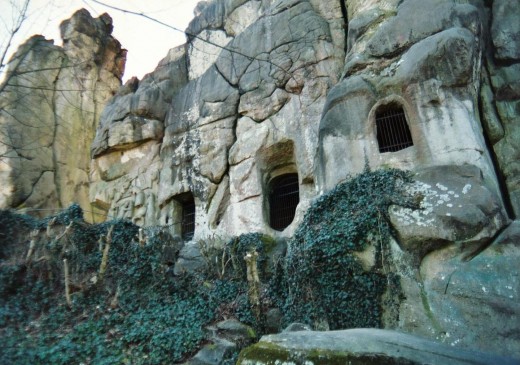
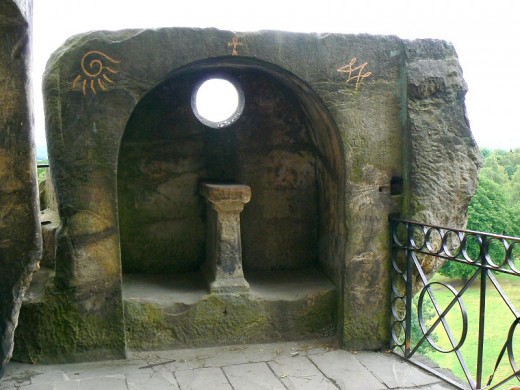
The Externsteine (Germany)
The Externsteine is essentially five tall (up to 35 meters) sandstone pillars formed naturally through erosion 120 million years ago. There is evidence of human use of the area as far back as 10,000BCE, based on the discovery of primitive tools. There is, however, debate over the evidence of Pagan use. It has been argued by some scholars that the Externsteine was a Pagan ceremonial center for centuries before the Christians took it for their own purposes and installed a chapel.
Hewn into the five pillars are several caves, many of which for purposes unknown. Niches are carved into unexpected spots, platforms are placed in inexplicable areas, and some staircases lead nowhere. One chamber, found at the top of one of the pillars, has a window facing the midsummer sunrise, casting a beam above the altar, which suggests it may have been used as a solar observatory in pre-Christian era.
During the Christian era, a relief was carved into the stone showing Jesus being taken down from the cross by Nicodemus, who is seated upon the Irminsul, the sacred tree of the Germanic pagans. The Nazis, who had a fascination in everything 'occult,' took interest in the Externsteine as the location of the Irminsul; fortunately they never did defile the place with their presence.
It seems these rock formations have ever been an attraction for the spiritual inclinations in humanity.
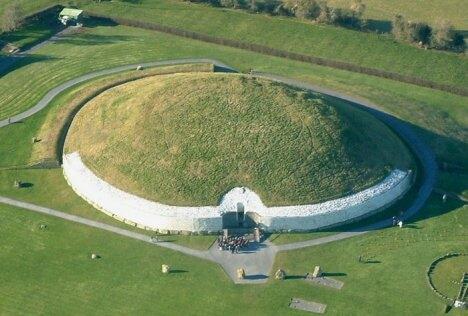

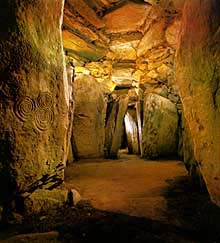
Newgrange (Ireland)
The unassuming mound of turf located in Ireland in fact houses one of the greatest accomplishments of prehistoric humanity. Made in 3300BCE, Newgrange is more ancient than both the Great Pyramid and Stonehenge. Past the ornate, spiral carvings of the entryway, one meets rows of smooth pillars proping up the earthen ceiling. This stone-lined 18 meter path leads straight forward, with a perpendicular intersection occurring towards the end, forming, indeed, a cross. Most remarkable of all, however, is that it is designed and positioned in such a way that during Winter Solstice, the entire chamber is set alight by the rays of the sun.
While it is not clear what significance the light of the sun has with the dead, there is no doubt that Newgrange was used as a burial place, based on the many cremated bodies found within. It is most likely that the light had some spiritual significance for the Neolithic builders.
Whatever its full significance may have been, one must be astounded by the astronomical and engineering knowledge marshalled into the construction of the wondrous site; the cultural and spiritual maturity, at such an early date, to have united such knowledge in use and found such an enduring resting place for the dead.
Tourists and Travelers
Unfortunately the beautiful, awe-inspiring places we've just explored together are visited by masses of tourists every year. Forgetting the physical damage of their feet, perhaps a chipped rock here and there for a souvenir, and the various accessibility entrances installed for their sake (one can see metal railings in the above photo of Newgrange), there is a more subtle danger of the tourist industry. That danger is that the tourist industry is an industry. There is a different between tourists and travelers. Tourists are on tour, satin their curiosity, being shuttled about with a vaguely informative guide or simply a silent busdriver; they take their photos, are proud of themselves for getting to see it, tell themselves, "Oh yes, it is pretty," as if by doing so they capture any of the real essence or wonder of the place; then they leave. What is so pernicious in this activity is that not only does it fail to appreciate the essence of the place as established over centuries, millennia, but subverts it by relating to that place in a different way altogether. They change it and transform it into a different place and a lesser place, merely an intriguing stop on the tour, not unlike a vapid display in a wax museum. They not only fail to recognize the awe, the mystery, the sacred, but deprive the place of its being such and thus deprive future visitors of it. It is this change in relationship that results in the more obvious, physical changes.
A traveler, however, comes on her own. She is mentally and emotionally prepared. She has studied, taken the time to understand what she will see. It is not a mere curiosity; it is not waxworks. She allows the place to be itself and express itself as the place it has been for centuries, sometimes millennia, and responds generously. The traveler is not unlike the Aborigines of Ayers Rock, respecting the shape and significances of things from what they call the Dreamtime, allowing these things to express themselves in a more primal essence, relating to them with respect even reverence.
I hope I've aided you, my intelligent readers, become travelers, at least from your desktops.




